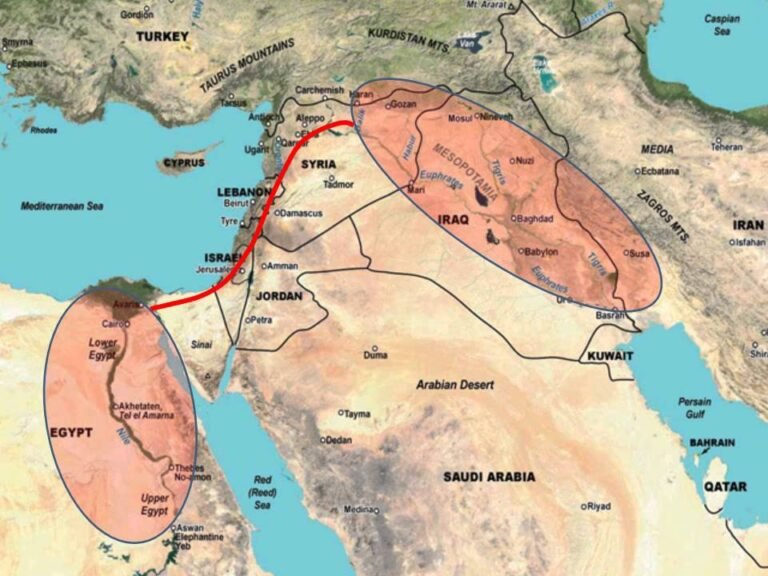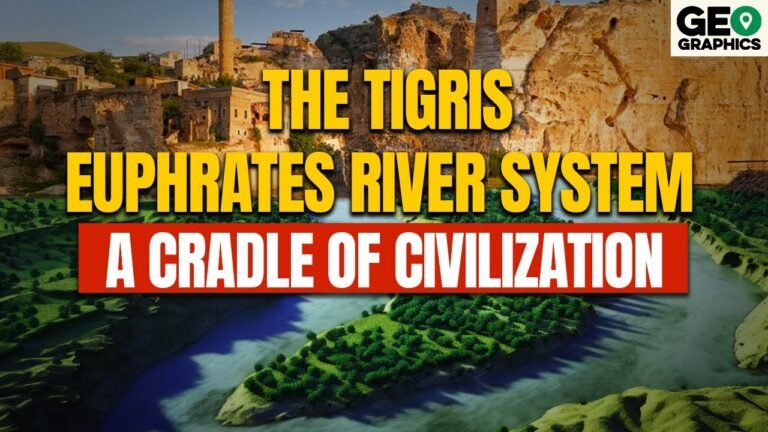Exploring the Biblical Middle East: A Comprehensive Map Guide
Exploring the ancient landscapes that shaped pivotal events in religious history, a map of the biblical Middle East reveals the intricate tapestry of cultures, civilizations, and narratives that have influenced millions. From the fertile banks of the Nile to the rugged terrains of Mesopotamia, this geographical guide not only highlights key locations mentioned in sacred texts but also invites readers to delve deeper into the rich historical context that surrounds these revered sites. Understanding this region is essential for anyone seeking to grasp the profound connections between geography and spirituality that continue to resonate today.
What are the key locations depicted on a map of the biblical Middle East?
The biblical Middle East is rich with significant locations that shaped ancient narratives and cultures. Prominent among them is Jerusalem, a city revered in Judaism, Christianity, and Islam, known for its sacred sites such as the Western Wall and the Church of the Holy Sepulchre. Nearby is Bethlehem, the birthplace of Jesus, while Nazareth, located further north, is celebrated as his childhood home. The Dead Sea, with its unique geographical features, is also notable, serving as a backdrop for biblical accounts and historical events.
Moving beyond these cities, the map highlights key regions that were central to biblical stories. The Sea of Galilee, where Jesus performed miracles, is a focal point in northern Israel, while the Jordan River, flowing down from the mountains into the Dead Sea, is significant for its role in the baptisms of Jesus and others. Additionally, areas such as Sinai, known for Moses receiving the Ten Commandments, and the plains of Moab, where the Israelites camped before entering the Promised Land, further emphasize the historical and spiritual landscapes of this ancient region.
How does a map of the biblical Middle East help in understanding historical events?
A map of the biblical Middle East serves as a vital tool for grasping the intricate tapestry of historical events that shaped ancient civilizations. By visually representing the geographical context, it allows us to identify significant locations such as Jerusalem, Babylon, and Egypt, which were pivotal in the narratives of the Old and New Testaments. This spatial awareness helps illuminate trade routes, migration patterns, and the interactions between different cultures, offering insight into how geography influenced political alliances and conflicts.
Furthermore, a detailed map underscores the connections between various biblical stories and their real-world settings. By placing events within a specific topographical framework, scholars and enthusiasts alike can better understand the challenges faced by figures like Moses or Paul, as well as the socio-political dynamics of the time. This contextualization not only enriches biblical interpretation but also fosters a deeper appreciation for the historical significance of the region, revealing how its landscapes shaped the beliefs and practices of ancient peoples.
Are there any specific maps that focus on different time periods in the biblical Middle East?
Yes, there are several maps that specifically focus on different time periods in the biblical Middle East, each designed to provide a visual context for significant historical events and geographical changes. For instance, maps depicting the ancient Near East illustrate the regions during the time of the patriarchs, highlighting areas like Canaan and Mesopotamia. Similarly, Hellenistic and Roman maps showcase the expansion of empires and the cultural exchanges that shaped the landscape. Additionally, interactive digital maps allow users to explore the evolution of cities and trade routes over centuries, enhancing understanding of the biblical narrative through a geographical lens. These resources serve as valuable tools for scholars and enthusiasts alike, bringing ancient texts to life through the power of visual representation.
Where can I find reliable maps of the biblical Middle East for study or reference?
For reliable maps of the biblical Middle East, consider exploring scholarly resources and institutions dedicated to historical geography. University libraries often provide access to specialized atlases and digital collections that include detailed maps reflecting ancient terrains, trade routes, and significant biblical sites. Additionally, reputable websites such as the Biblical Archaeology Society and the Digital Atlas of Roman and Medieval Civilizations offer interactive maps that can enhance your study experience.
Another excellent source for maps is religious organizations and educational platforms that focus on biblical studies. Many churches and seminaries publish high-quality resources, including printed maps and online tools designed for both educational and personal use. These maps often come with annotations and historical context, making them invaluable for anyone looking to deepen their understanding of biblical locations and events.
Navigate Ancient Lands: Your Guide to Biblical Geography
Step into the rich tapestry of biblical geography, where ancient lands come alive with stories of faith, culture, and history. From the sun-soaked hills of Judea to the bustling markets of Jerusalem, each location offers a glimpse into the lives of those who walked these paths centuries ago. Discover the significance of the Jordan River, a symbol of baptism and renewal, or explore the rugged terrain of Sinai, where Moses received divine commandments. As you navigate these sacred sites, you’ll gain a deeper understanding of the narratives that shaped civilizations and continue to inspire millions today. Whether you’re a seasoned traveler or a curious learner, this journey through ancient lands will enrich your spirit and ignite your passion for discovery.
Unearthing History: Mapping the Middle East’s Sacred Sites
The Middle East, often regarded as the cradle of civilization, is a treasure trove of sacred sites that narrate the rich tapestry of human history. From the ancient ziggurats of Mesopotamia to the majestic pyramids of Egypt, each landmark serves as a testament to the spiritual and cultural evolution of the region. Journeying through these hallowed grounds reveals the intersections of faith, art, and architecture, where diverse religious traditions have flourished over millennia. Whether it’s the intricate mosaics of Byzantine churches or the serene beauty of Islamic mosques, these sites invite exploration and reflection, offering a profound connection to the past that continues to shape the identity of the Middle East today.
Journey Through Time: Discover the Biblical Landscape
Embark on an extraordinary adventure as you traverse the biblical landscape, where ancient stories come to life against a backdrop of breathtaking scenery. From the rolling hills of Judea to the shores of Galilee, each location holds a rich tapestry of history and spirituality. Experience the places where pivotal events unfolded, deepening your understanding of the narratives that have shaped faith for millennia. This journey offers not just a glimpse into the past, but a connection to the timeless lessons that resonate today.
As you wander through these sacred sites, the echoes of history whisper in the winds, inviting you to reflect on the profound significance of each moment. Stand where prophets once walked, explore the serene landscapes that inspired generations, and witness the enduring legacy of faith that binds communities together. This exploration is not merely a travel experience; it is a profound pilgrimage through time, encouraging you to engage with the stories that continue to inspire millions around the world.
The map of the biblical Middle East serves as a vital key to understanding the historical and cultural context of the scriptures. By exploring the geographical landscapes, ancient trade routes, and significant landmarks, we gain deeper insights into the narratives that have shaped religious thought and identity for centuries. This visual representation not only enriches our appreciation of biblical stories but also invites us to reflect on the enduring impact of these ancient locations on today’s world.







